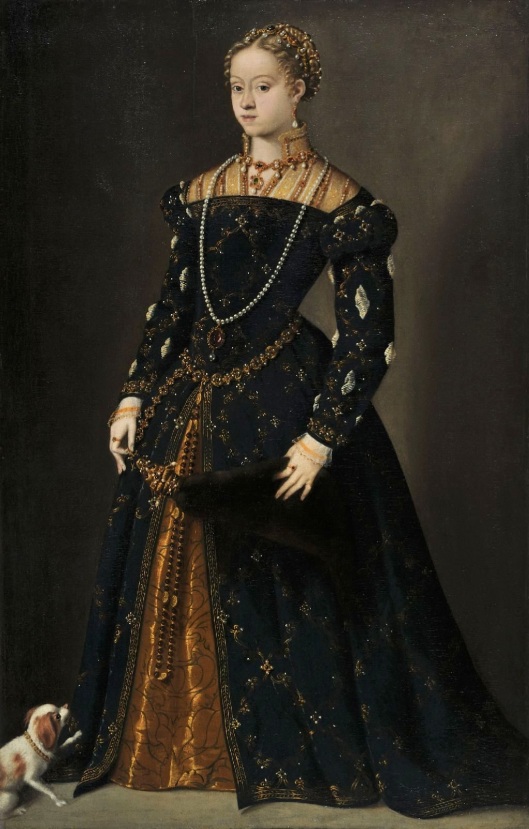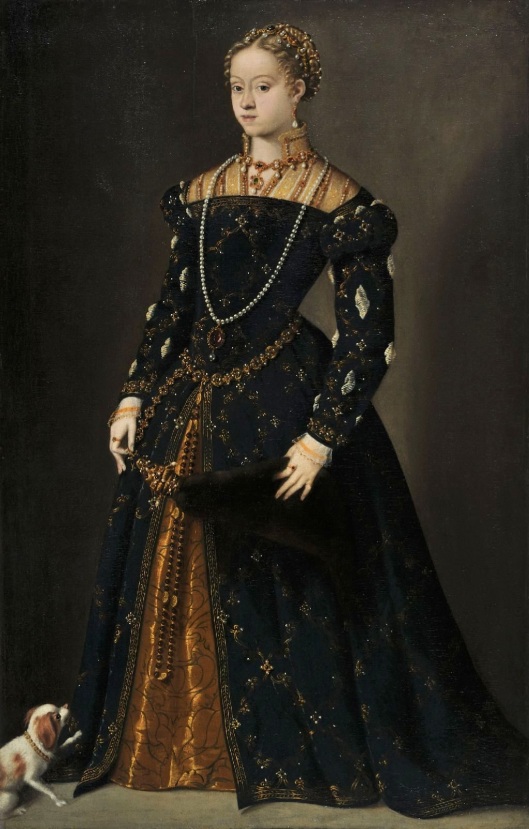Tags
Augustus II of Poland, Augustus the Strong, Christian VI of Denmark and Norway, Christiane Eberhardine of Brandenburg-Bayreuth, Count Christian Ernst of Stolberg-Wernigerode, Queen of Poland, Sophie Magdalene of Brandenburg-Kulmbach
Christian VI (November 30, 1699 – August 6, 1746) was King of Denmark and Norway from 1730 to 1746. The eldest surviving son of Frederik IV and Louise of Mecklenburg-Güstrow, he is considered one of Denmark-Norway’s more anonymous kings, but he was a skilled politician, best known for his authoritarian regime.
He was the first king of the Oldenburg dynasty to refrain from entering in any war. During his reign both compulsory confirmation (1736) and a public, nationwide school system (1739) were introduced. His chosen motto was “Deo et populo” (for God and the people).

Early years
From 1706, Christian came to understand Danish but used German for everyday speaking and writing. He got a better education and acquired more knowledge than his father and grandfather. As Crown Prince he was allowed by his father to find a wife by himself. During a trip through Europe accompanied by Chancellor Ulrik Adolf Holstein, the Crown Prince decided on Sophie Magdalene of Brandenburg-Kulmbach.
Sophie Magdalene of Brandenburg-Kulmbach was born in Castle Schonberg, Bavaria, to Christian Heinrich, Margrave of Brandenburg-Bayreuth-Kulmbach by his wife, Countess Sophie Christiane of Wolfstein. Sophie Magdalene of Brandenburg-Kulmbach was raised at the court of the Queen of Poland, Christiane Eberhardine of Brandenburg-Bayreuth. Sophie Magdalene was one of the ladies-in-waiting at the court of the Saxon-Polish Queen Christiane Eberhardine. Christiane Eberhardine was the wife of Augustus II the Strong, was Elector of Saxony from 1694 as well as King of Poland and Grand Duke of Lithuania.
Sophia Magdalene came from a minor margraviate (not greater than Lolland-Falster) of the Hohenzollern dynasty where able consciousness was inversely proportional to the funds; half of the land was mortgaged, and her father died young. She had 13 siblings and was considered an unequal match for the Danish Prince, but the king gave his permission. In Christian’s letters, he describes his feelings for the princess’s intense religiosity, which reminded him of his own. They were married on August 7, 1721, while Christian was crown prince. The wedding was held at Pretzsch in Saxony.
The king was shy and introverted by nature, and stayed away from the public. Christian’s indignation at his father’s bigamy and general promiscuity – the reason for the great sorrow of his late mother – led him to one of his first government actions: reversing his father’s will and depriving widow Queen Anna Sophie, (Frederik IV’s third wife if all “marriages” are counted, second wife if bigamous marriages excluded), of a large part of the wealth she had inherited before exiling her to the Clausholm estate, her childhood home.
For the first ten years of his government he consulted often with his cousin, Count Christian Ernst of Stolberg-Wernigerode. The count took part in almost everything, from the dismissal of cooks in the Queen’s kitchen to determining alliance policy. He encouraged the king as long as possible to maintain the English alliance, which led to the marriage between Louise, the daughter of George II of Great Britain with the king’s elder son Frederick Louis, Prince ofWales.
In 1733, the royal couple travelled to Norway. A poem/speech by Peter Höyer was performed in his honor when he visited the city of Trondheim on July 18.
Christian’s central domestic act was the introduction of the so-called adscription of 1733 (in Danish, stavnsbånd), a law that forced peasants to remain in their home regions, and by which the peasantry was subjected to both the local nobility and the army. Though the idea behind this law was probably to secure a constant number of peasant soldiers, it later was widely regarded as the ultimate subjugation of the Danish peasantry, and damaged Christian VI’s reputation. The act would later be abolished in 1788.
Christian’s foreign policy was a peaceful one and Denmark-Norway kept strictly neutral. In both trade and commerce, it was an age of advancement; some new companies and banks were founded. His plans to make their only daughter, Princess Louise, Queen of Sweden never came to fruition. During the election of the heir to the Swedish throne, both the prince of Zweibrücken-Birkenfeld and the prince of Mecklenburg were considered as candidates to be heir to the childless King Frederick I of Sweden. In 1743, Adolf Frederik of Holstein-Gottorp was elected Swedish heir.
From his youth, Christian VI was sickly and chronically ill. On August 6, 1746 – the day before his silver marriage anniversary – the king died on Hirschholm Palace. Christian VI was interred in Roskilde Cathedral. The neoclassical memorial designed and produced by sculptor Johannes Wiedewelt was commissioned by the king’s widow who upon his death.
The marble monument was completed in 1768, but not installed at Roskilde Cathedral until 1777.
The monument includes a sarcophagus and two female figures, “Sorgen” (“Sorrow”) and “Berømmelsen” (“Fame”). This was the first neoclassical sarcophagus in Denmark and is considered to mark the start of neoclassicism in that country.




